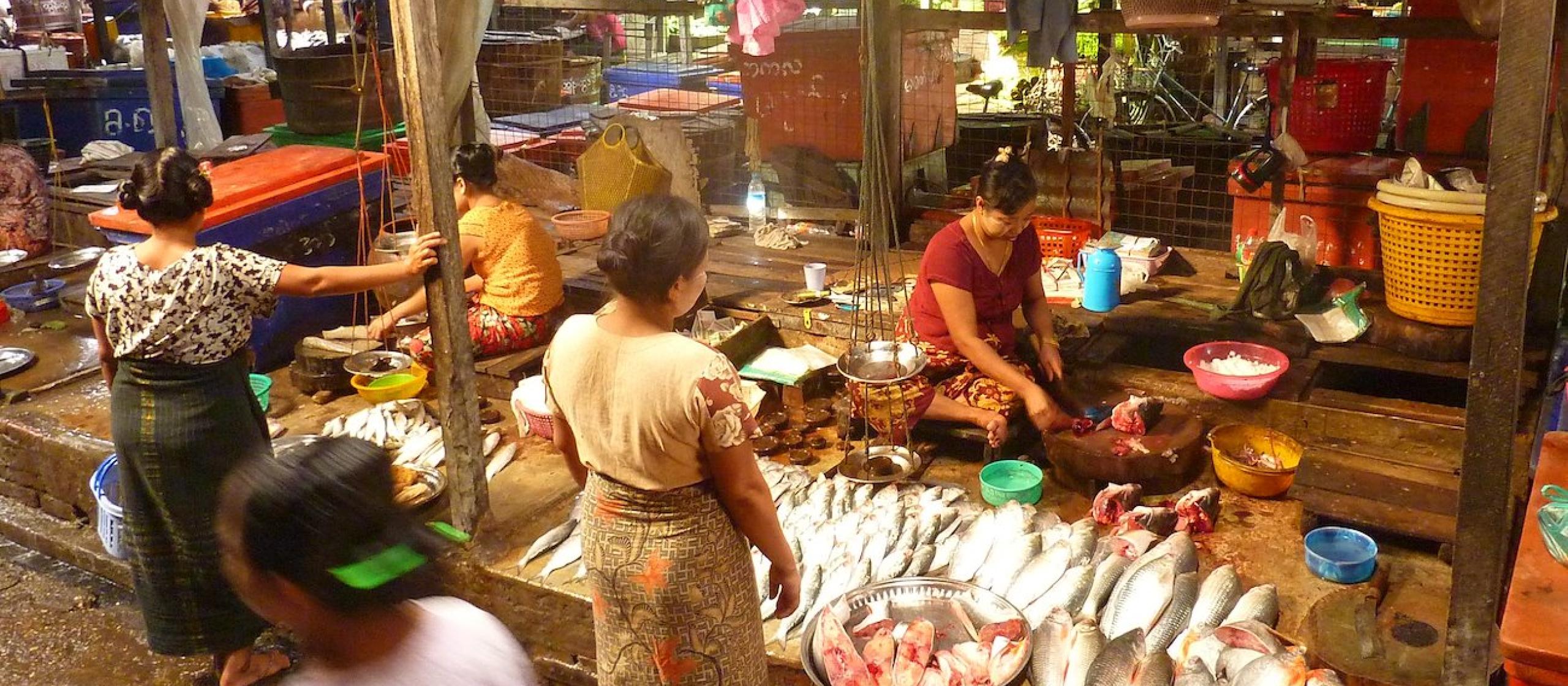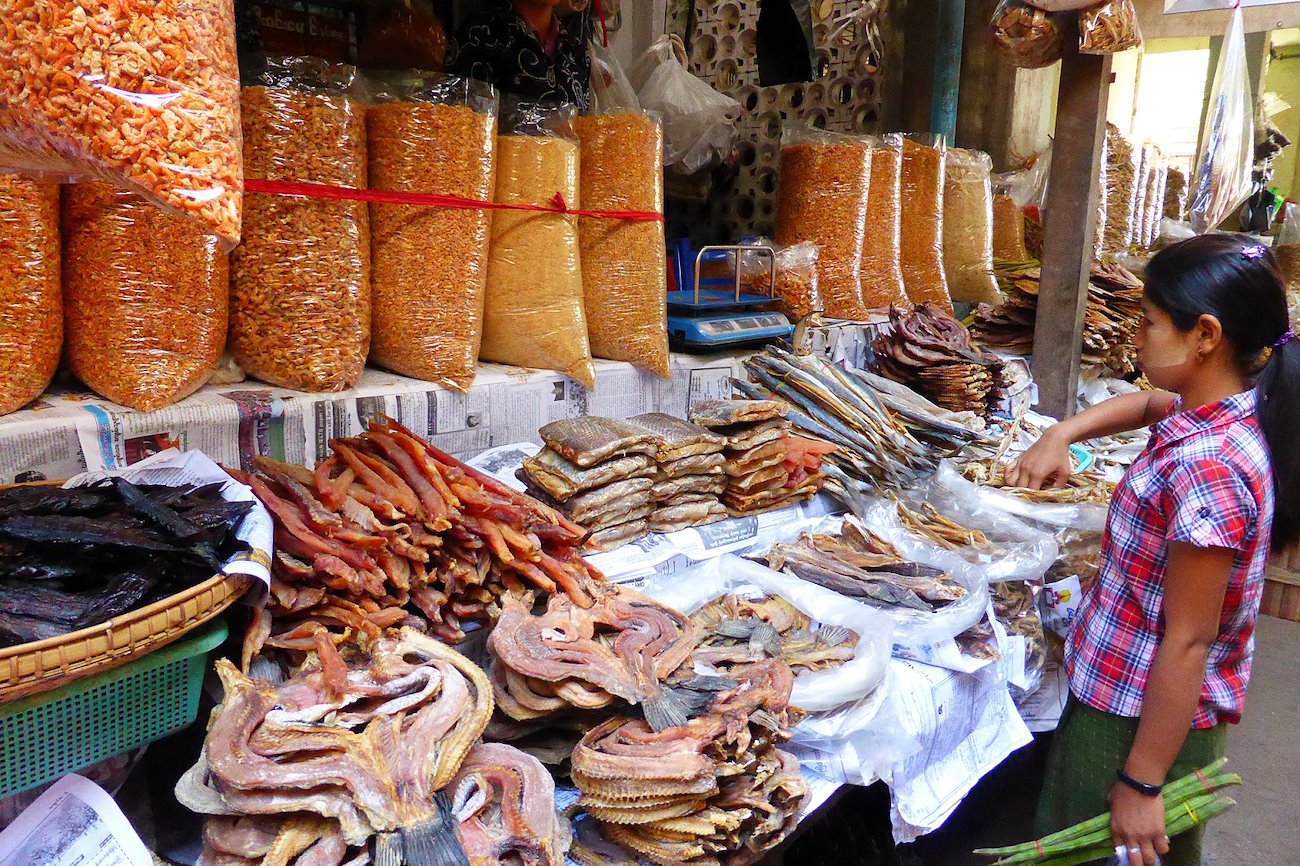- HomeHome
-
About ACIAR
- Our work
- Our people
-
Corporate information
- ACIAR Audit Committee
- Commission for International Agricultural Research
- Policy Advisory Council
- Agency reviews
- Executive remuneration disclosure
- Freedom of information (FOI)
- Gifts and benefits register
- Information publication scheme
- List of new agency files
- Contracts
- Legal services expenditure
- Privacy impact assessment register
- Commonwealth Child Safe Framework
- Benefits to Australia
- Careers
- 40 years of ACIAR
-
What we do
- Programs
- Cross-cutting areas
- Resources
- Where we work
-
Funding
- Research projects
- Fellowships
-
Scholarships
- John Allwright FellowshipScholarships to study in Australia for ACIAR partner country scientists to have Australian postgraduate qualifications
- ACIAR Pacific Agriculture Scholarships and Support and Climate Resilience Program
- Alumni Research Support Facility
- Publications
- News and Outreach
Date released
23 March 2018
Nearly half of Myanmar’s people live in coastal states and regions. Coastal areas include a wide range of habitats such as coral reefs, seagrass beds, mangroves, mudflats and rocky shores. These provide important environments for Myanmar’s impressive marine biodiversity, which includes endangered species such as dugongs, marine turtles and migratory shore birds. Importantly, Myanmar’s coastal fisheries also support the livelihood of millions of Myanmar citizens who are among the most marginalised, poor and vulnerable people in Myanmar society. This includes some of the distinct ethnic minorities, such as the Salone people of the Tanintharyi Region.
Coastal fishers typically use small-scale gear (seines and stow nets, longlines, gill nets and traps) and target a wide range of species (fish, molluscs and crustaceans). Women play a vital role in this economy, particularly in connection with fish processing. Locally processed coastal fishery products are an important nutritional component of the Myanmar diet and particularly important in the dry zone and upland areas.
In recent years, however, the capacity of these fishery areas to support viable livelihoods and contribute significantly to the local economy has come under threat from several sources. These include reductions in fish stocks, damage to critical habitats, environmental pollution and disasters.
Five priority areas have been identified. These need immediate attention to enable coastal resources to recover to more productive levels and allow fisher communities to continue to benefit from them. These actions must be aligned with key development principles such as working through partnerships, promoting co-management and striving for greater gender equality.
The five priority areas for action are as follows.
- Strengthening coastal communities and safeguarding fishery-based livelihoods
- Harmonising laws and policies affecting coastal fisheries
- Closer alignment of national and state/ regional-level agencies and institutions t o improve coastal fisheries management and law enforcement
- Improving the management of coastal fisheries resources
- Improving information and statistics for coastal fisheries management.
The policy framework
Sustaining and increasing the contribution of coastal fisheries to poverty reduction and food security faces three interrelated problems. First, the overharvesting of stocks combined with insecure tenure and competition with other users has degraded the resource base. Second, the sustainability of coastal fisheries is threatened by changes in the broader landscape. Third, even where local innovations address some of these threats, there is inadequate policy recognition of the importance of coastal fisheries and poor alignment of national, regional and local institutions.
The challenge is to put in place governance and management frameworks that will secure a productive future for coastal fisheries and the communities that depend upon them. These frameworks must achieve a balance between meeting human wellbeing needs and sustaining the wellbeing of coastal resources.
Meeting this challenge requires coordinated action from national and regional/state institutions working with coastal communities to re-imagine ways coastal resources can be governed effectively. Many of the building blocks to do this are already in place and, while stock and natural resource recovery is a long-term challenge, much progress can be made in the short term through timely and strategic action.
Five key opportunities for action are highlighted that will allow coastal fisheries and fishery communities to play a productive and significant role in Myanmar’s immediate and longterm future.
Action 1 - Strengthening coastal communities and safeguarding fishery-based livelihoods
Empowering and strengthening of coastal communities will be fundamental to Myanmar’s social and economic progress. Empowerment can occur through giving coastal communities a louder voice and greater participation in rule-making and fisheries co-management responsibility. Such an approach has proved successful in many countries in the region.
Community awareness of laws, rules and regulations relating to natural resource use will be improved through fishery co-management arrangements. Management mechanisms can be localised by recognising and valuing traditional customary fishing practices and the indigenous knowledge of communities.
In many coastal communities, most, if not all, families depend on fishing for their livelihood. New livelihood options such as small-scale aquaculture and eco-tourism, technical support for improving traditional women-led practices, including fish processing and value addition, need to be promoted to reduce dependency on a single activity in coastal communities.
Improved infrastructure for efficient landing, postharvest processing and marketing of fish products is critical. Rural finance schemes that support livelihood diversification are seen as essential. The potential for women to benefit from new livelihood activities must be fully explored. The working conditions of the fishers and fish workers are often harsh and dangerous. Health and safety at work can be improved through the strength of cohesive community groups and the implementation of co-management arrangements. Improving fisher safety at sea and local emergency responses are also required.
Action 2 - Harmonising laws and policies affecting coastal fisheries
There is some confusion and conflict among national, regional and state-based legislation and regulations, which constrain coastal fisheries legal reform. Coherence among these laws is the foundation for effective decentralised governance and the improved management of fisheries. A strong legal foundation for co-management arrangements is the basis for empowering communities.
A comprehensive review of Myanmar’s natural resource-related laws and policies is recommended to enable more effective policy and regulation in support of the reform of coastal fisheries governance. Greater participation by communities and local institutions, as well as the integration of traditional and customary laws, will result in greater acceptance of and compliance with laws and policies. An important component of this legal policy and law reform will be a reduced emphasis on revenue collection and more focus on the sustainable development of coastal fisheries and communities. Harmonised national and state/region laws and policies will provide a solid foundation for securing the contribution of coastal fisheries for future food security and development.
Action 3 - Closer alignment of national and state/regional-level agencies and institutions to improve coastal fisheries management and law enforcement
The Constitution of Myanmar supports the decentralisation of coastal fisheries authority to states and regions. A review of this decentralisation process is required so states and regions can be guided on ways to harmonise approaches to the governance of coastal fisheries.
Collaboration between different national and state/regional-level organisations is essential for improving management of coastal fisheries. For example, coastal communities frequently complain about the number of offshore vessels fishing illegally in shallow coastal areas.
Surveillance of illegal fishing and enforcement of fisheries laws require close cooperation between and coordination by several different bodies, including the Department of Fisheries (DoF), the Navy, the coastguard and communities.In another example, the protection of coastal conservation areas is regarded as a major strategy to achieve fisheries sustainability. Clarification of responsibilities and improved cooperation between environment agencies and DoF is also required. Additionally, in many of Myanmar’s coastal areas, tourism is growing fast. Cooperation between tourism-related agencies and DoF is essential so that responsible tourism (or ecotourism) is promoted and coastal resources, including fish stocks, are not damaged as a result of poorly planned infrastructure development and waste management.
Action 4 - Improving the management of coastal fisheries resources
Critical to managing Myanmar’s inshore fishery resources is the need to strengthen existing fisheries management systems and develop new approaches. To begin with, poorly defined coastal fisheries boundaries, which vary across states and regions, need to be standardised and delineated. This should be followed by an institutional review of DoF’s management functions, structures, working practices including revenue collection and allocation, and the development of new fishing-gear licence collection arrangements that are transparent and not overly burdensome to fishing communities.
Given the widespread threat to coastal fisheries from illegal fishing, there is a critical need to develop and implement strategies, involving all co-management partners—DoF, non-government organisations (NGOs), the private sector and communities—to eradicate illegal fishing. Capacity building of all partners in fisheries co-management will be critical. Special protection measures are required to protect and conserve Myanmar’s most critical coastal habitats (coral reefs, mangroves and seagrass meadows) and their extraordinary biodiversity.
Action 5 - Improving information and statistics for coastal fishery management
Information collection from coastal communities and fisheries focuses on licensing and fish production statistics for regional/state and national reporting. There are many inconsistencies in the statistics and they provide a weak basis for effective fisheries management. There is no species-specific data collected on catch and effort in Myanmar coastal fisheries.
Priority investment in the design and implementation of a national fisheries statistics system that includes coastal fisheries is recommended. Effective implementation of this system will require the integration of township, district and regional/state agencies as well as the training and resourcing of DoF officers in collecting, managing and analysing this data.
Information gathered should be explicitly linked to the improved sustainability of fisheries rather than solely for use in national production planning and reporting. More broadly, there is an urgent need to build Myanmar’s fisheries research capacity through establishing research partnerships between DoF, universities, NGOs, central statistical offices (CSOs) and communities and through strengthening the Fisheries Research and Development Network.
Conclusions
These five actions are required urgently if Myanmar’s coastal fisheries are to be secured for the benefit of future generations. Progress towards implementing these five proposed actions can only be made through the establishment of partnerships involving government, CSOs, NGOs, the private sector and communities. These partnerships would begin to turn the tide on the damaging practices that are degrading these resources and threatening the viability of coastal community livelihoods.
Visit ACIAR's website for more information on improving research and development of Myanmar's inland and coastal fisheries.
This article was originally published in Partners Magazine, Issue Two, 2017.





